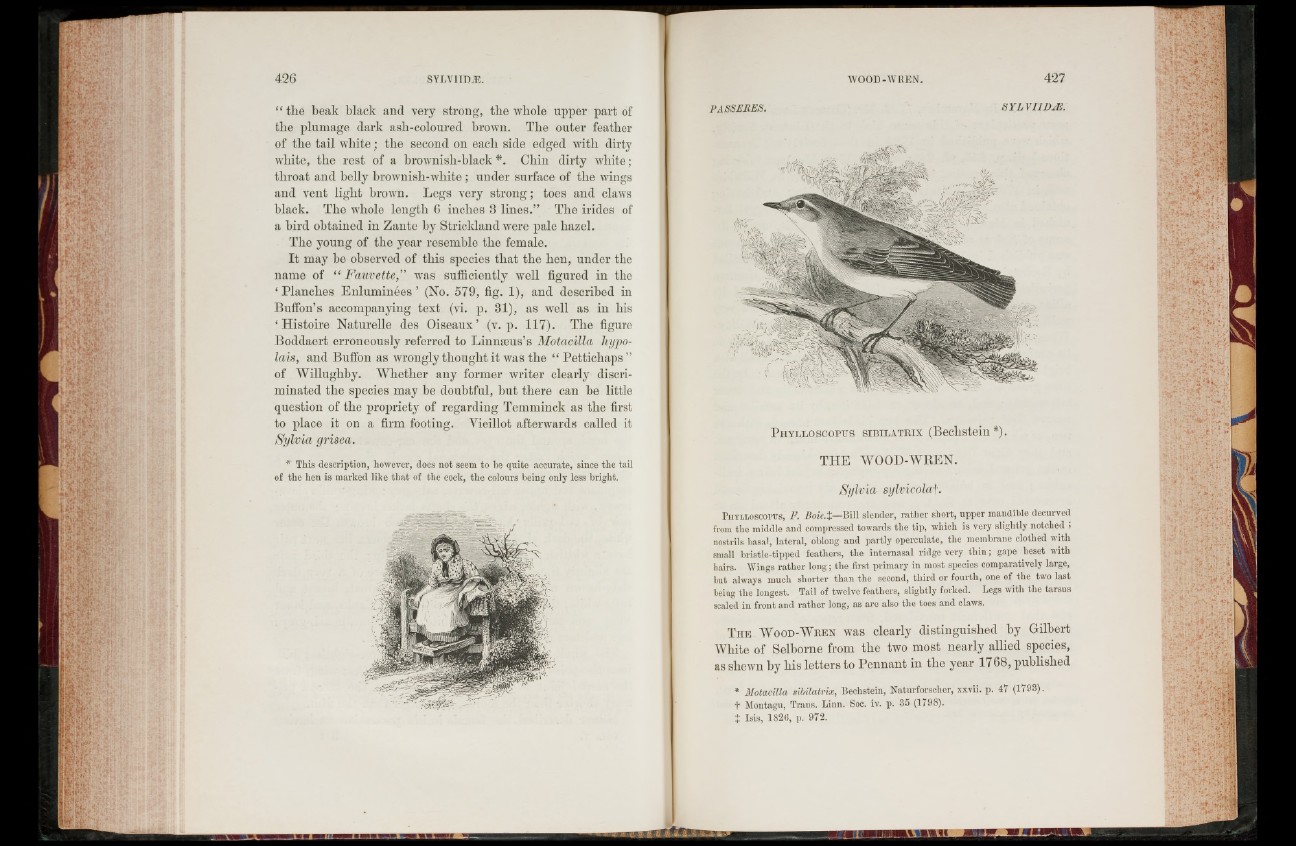
“ the beak black and very strong, the whole upper part of
the plumage dark ash-coloured brown. The outer feather
of the tail white ; the second on each side edged with dirty
white, the rest of a brownish-black *. Chin dirty white ;
throat and belly brownish-white ; under surface of the wings
and vent light brown. Legs very strong; toes and claws
black. The whole length 6 inches 3 lines.” The irides of
a bird obtained in Zante by Strickland were pale hazel.
The young of the year resemble the female.
I t may be observed of this species that the hen, under the
name of “ Fauvette,” was sufficiently well figured in the
‘ Planches Enluminées’ (No. 579, fig. 1), and described in
Buffon’s accompanying text (vi. p. 31), as well as in his
‘ Histoire Naturelle des Oiseaux’ (v. p. 117). The figure
Boddaert erroneously referred to Linnæus’s Motacilla liypo-
lais, and Buffon as wrongly thought it was the “ Pettichaps”
of Willughby. Whether any former writer clearly discriminated
the species may be doubtful, hut there can be little
question of the propriety of regarding Temminck as the first
to place it on a firm footing. Vieillot afterwards called it
Sylvia grísea.
* This description, however, does not seem to he quite accurate, since the tail
of the hen is marked like that of the cock, the colours being only less bright.
P h y l lo s c o pu s s ib il a t r ix (Beclistein *).
THE WOOD-WREN.
Sylvia sylvicolai.
P hylloscopus, F. Boie.i—Bill slender, rather short, upper mandible decurved
from the middle and compressed towards the tip, which is very slightly notched 1
nostrils basal, lateral, oblong and partly operculate, the membrane clothed with
small bristle-tipped feathers, the internasal ridge very th in ; gape beset with
hairs. Wings rather long; the first primary in most species comparatively large,
but always much shorter than the second, third or fourth, one of the two last
heing the longest. Tail of twelve feathers, slightly forked. Legs with the tarsus
scaled in front and rather long, as are also the toes and claws.
T h e W o o d -W r e n was clearly distinguished by Gilbert
White of Selborne from the two most nearly allied species,
as shewn by his letters to Pennant in the year 1768, published
* Motacilla sibilatrix, Bechstein, Naturforscher, xxvii. p. 47 (1793).
Montagu, Trans. Linn. Soc. iv. p. 35 (1798).
f Isis, 1826, p. 972.
\ \ l .